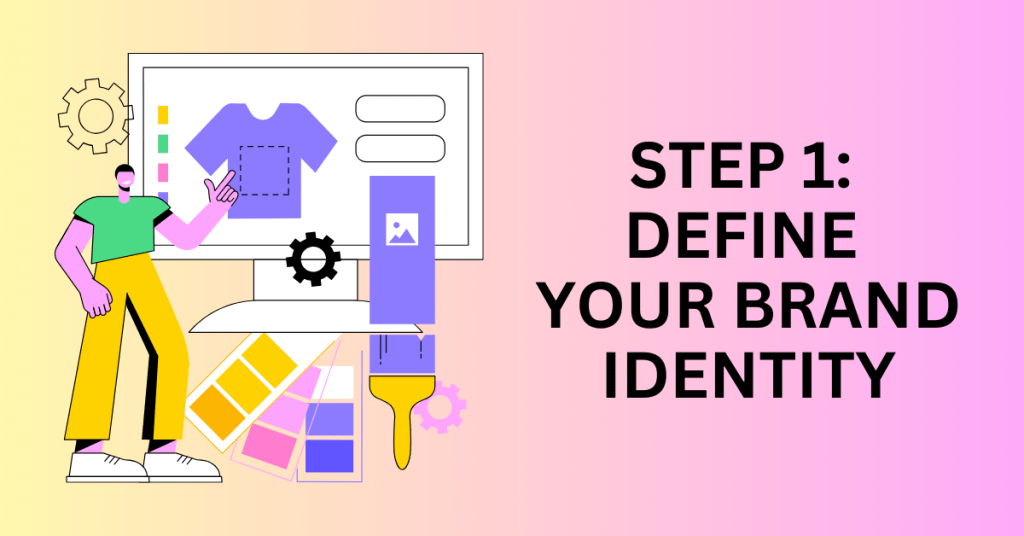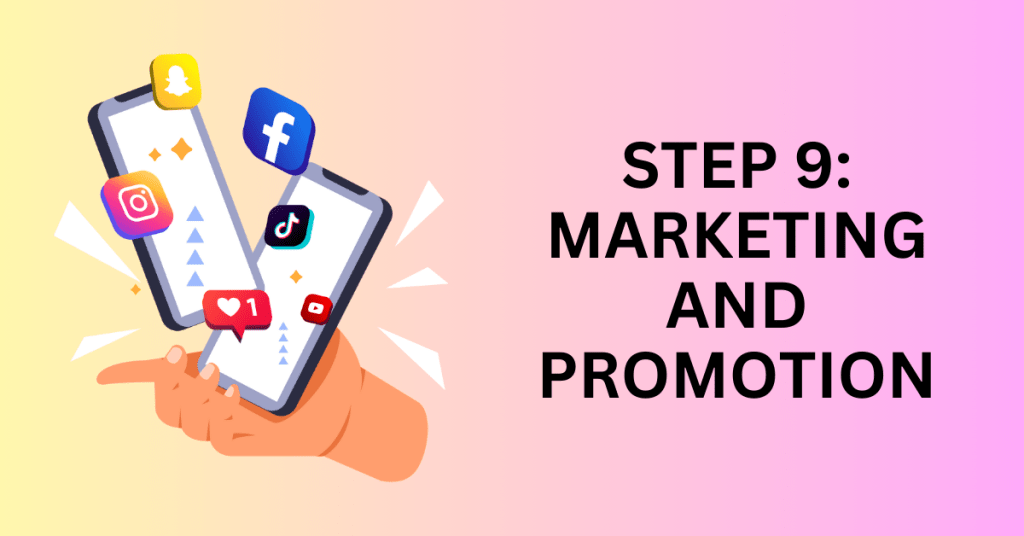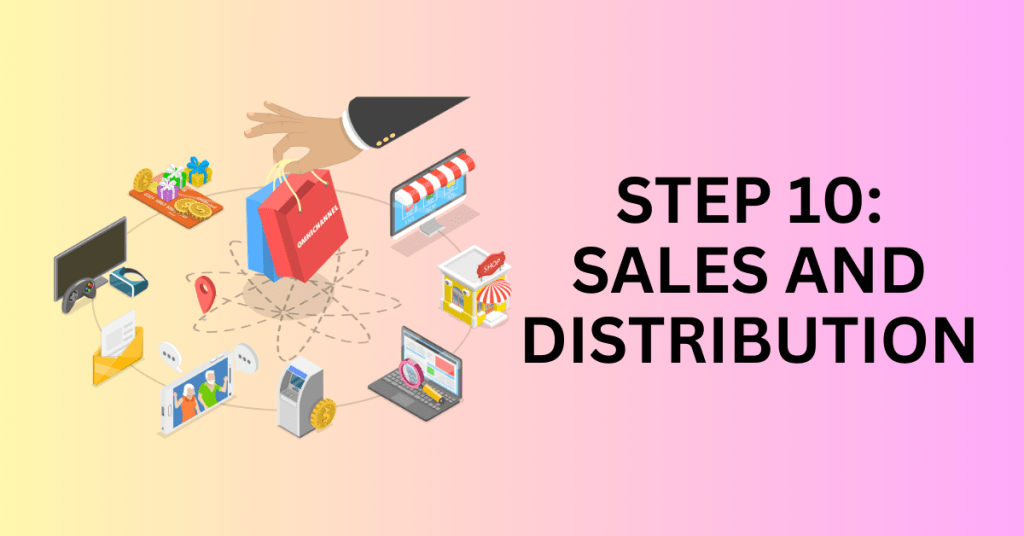Embarking on the journey to start a clothing brand is a thrilling prospect, intertwining creativity, entrepreneurship, and a passion for fashion. The traditional methods of initiating a clothing brand can be daunting, involving substantial investments, inventory risks, and intricate supply chains.
However, the advent of the print-on-demand (POD) business model has revolutionized the industry, offering an efficient and cost-effective alternative. By leveraging POD, aspiring clothing brand entrepreneurs can bypass the challenges of inventory management and achieve a streamlined approach to launching their brands.
In this comprehensive guide, we’ll navigate through twelve vital steps, focusing on utilizing the prowess of print-on-demand to guide you on how to start and launch your clothing brand.
Start Your Print-On-Demand Business Free with Printify
Step 1: Define Your Brand Identity

The first step in starting a clothing brand is to define your brand identity. This includes your brand’s vision, mission, and values. This also means defining what is the story behind your brand, and what sets it apart from others in the market.
In addition, you will need to understand your target audience and create a brand persona that resonates with them. This identity will then serve as the foundation for all your future decisions, from design to marketing.
To establish a strong brand identity, you should first articulate your brand’s vision, mission, and values.
- What inspired you to start this clothing brand?
- What do you want to achieve in the fashion industry?
Your answers will help shape your brand’s identity and give it a sense of purpose.
Additionally, create a brand persona that resonates with your target audience. Is your brand youthful and energetic, or sophisticated and timeless? These characteristics should be reflected in your products, marketing, and overall brand image.
Step 2: Market Research to Start a Clothing Brand

Conduct thorough market research to understand the current trends, your competitors, and your potential customers. You can then analyze consumer preferences, pricing strategies, and distribution channels in the fashion industry.
This knowledge will help you identify gaps in the market that your clothing brand can fill and ensure that your products align with market demand.
Effective market research is crucial to understand the competitive landscape and your potential customers. Study your competitors. Their strengths, weaknesses, and unique selling points. Identify trends in the fashion industry, not only in terms of styles but also in sustainability, ethical production, and consumer preferences.
Analyze consumer behaviour, demographics, and psychographics to create products that align with their needs and desires.
Start Your Print-On-Demand Business Free with Printify
Step 3: Create a Business Plan to Start a Clothing Brand

A well-structured business plan is essential for securing funding and guiding your clothing brand’s growth. Then, outline your brand’s goals, financial projections, marketing strategy, and operational plan.
Include details about your products, pricing strategy, and production process. A strong business plan will also help you stay focused and make informed decisions as you move forward.
Your business plan should serve as a roadmap for your clothing brand. It should include financial projections, outlining startup costs, expected revenue, and profitability timelines.
Define your marketing strategy and how you intend to reach your target audience. Detail your operational plan, covering aspects like sourcing materials, production, and distribution. A well-structured business plan is not only essential for securing funding but also for keeping your brand’s goals and strategies on track.
Step 4: Legal Structure and Registration

Choose a legal structure for your clothing brand, such as a sole proprietorship, LLC, or corporation, and register your business with the appropriate authorities. This step is crucial for protecting your personal assets and ensuring compliance with local laws and regulations.
You may also need to trademark your brand name and logo to establish your unique identity and protect your intellectual property.
Then, choose the legal structure that best suits your clothing brand, considering factors like liability and taxation. You can choose from the common options including sole proprietorship, limited liability company (LLC), partnership, or corporation. Finally, register your business with the appropriate government agencies and obtain any necessary licenses and permits.
Trademark your brand name and logo to protect your intellectual property.
Step 5: Source Funding to Start a Clothing Brand

Determine how you will finance your clothing brand. Depending on your budget and business plan, you can explore various funding options, such as personal savings, loans, investors, or crowdfunding.
Carefully assess the pros and cons of each method and choose the one that best suits your needs and goals.
Determine how you will finance your clothing brand. If you’re using personal savings, create a budget that outlines your startup costs, including design, production, marketing, and overhead. If you need external funding, explore options like loans from banks or investors, crowdfunding platforms, or venture capital.
Each funding method has its pros and cons, so carefully consider which aligns with your business goals.
Start Your Print-On-Demand Business Free with Printify
Step 6: Design Your Clothing Line to Start a Clothing Brand

With a clear brand identity and market research in hand, it’s time to start designing your clothing line. Create sketches, select fabrics, and work on the overall aesthetics of your products.
Consider collaborating with fashion designers or hiring experienced designers who can bring your vision to life. Ensure that your designs align with your target audience’s preferences and the market trends you identified earlier.
This step involves translating your brand’s identity and market research into tangible designs. In addition, you may collaborate with fashion designers who share your vision or hire in-house designers.
Create detailed sketches and select high-quality materials that fit your brand’s style and budget. Ensure that your designs are both unique and appealing to your target audience. Constantly refine and adapt your designs to stay relevant in the ever-changing fashion industry.
Step 7: Manufacturing and Production

Select reliable manufacturers or production partners to turn your designs into reality. Then, research potential suppliers, request samples, and negotiate pricing and terms.
Maintain a close relationship with your manufacturers to ensure quality control and timely production. Establish a production schedule to meet demand while minimizing excess inventory.
Finding reliable manufacturers or production partners is essential to turn your designs into finished products. Research potential suppliers, both locally and globally.
Request samples and evaluate their quality and consistency. And then, negotiate pricing, minimum order quantities, and delivery timelines. Maintain open communication with your manufacturing partners to ensure that your vision is realized. In addition, the quality control is maintained throughout the production process.
Start Your Print-On-Demand Business Free with Printify
Step 8: Branding and Packaging

Invest in creating a strong brand identity through your logo, packaging, and labelling. Your branding should reflect your brand’s identity and resonate with your target audience.
Firstly, you may consider sustainable and eco-friendly packaging options to align with modern consumer values. A memorable and aesthetically pleasing brand presentation can set your clothing brand apart from the competition.
Then, invest in branding that resonates with your target audience. Your brand logo, colour schemes, and fonts should be consistent across all materials, from labels to marketing collateral.
Finally, create packaging that not only protects your products but also enhances the unboxing experience for customers. Consider eco-friendly and sustainable packaging options to align with modern consumer values and reduce your brand’s environmental footprint.
Step 9: Marketing and Promotion

Develop a comprehensive marketing strategy to promote your clothing brand. This should also include an online presence through a website and social media profiles.
Utilize digital marketing techniques like SEO, content marketing, email marketing, and social media advertising to reach your target audience. Then, consider collaborating with influencers and fashion bloggers to increase brand awareness.
Don’t forget traditional marketing channels like press releases and events, especially if they align with your brand’s identity.
Develop a comprehensive marketing strategy that includes online and offline tactics. Create a professional website with an easy-to-navigate e-commerce platform.
Establish a strong social media presence on platforms relevant to your audience. Utilize digital marketing techniques such as search engine optimization (SEO), content marketing, email marketing, and paid advertising to drive traffic to your website.
Collaborate with influencers and fashion bloggers to leverage their reach and credibility. Don’t neglect traditional marketing methods like press releases, fashion events, and partnerships with local retailers.
Start Your Print-On-Demand Business Free with Printify
Step 10: Sales and Distribution

Determine your sales channels and distribution strategy. Will you also sell your clothing through an e-commerce website, brick-and-mortar stores, or a combination of both?
You may also explore options like third-party retailers, pop-up shops, or even participating in fashion trade shows to expand your reach. Then, implement an inventory management system to track stock levels and fulfil orders efficiently.
Determine your sales channels and distribution strategy. If you’re selling online, optimize your website for conversions, implement a secure payment system, and set up efficient order fulfilment and shipping processes.
If you plan to sell through physical stores, explore options like consignment arrangements or partnerships with boutique retailers. Implement inventory management systems to keep track of stock levels and avoid overstocking or understocking.
Step 11: Pricing Strategy

Set competitive and profitable prices for your clothing line. Consider factors like production costs, competitor pricing, and perceived value.
Be mindful of the price elasticity of demand and adjust your pricing strategy as necessary. Keep an eye on your profit margins while staying within a range that appeals to your target audience.
Pricing your products requires a delicate balance between covering your production costs and appealing to your target audience. Take into account factors like material costs, labour, overhead, and desired profit margins.
Study your competitors’ pricing strategies and consider market demand and price elasticity. Be prepared to adjust your pricing strategy as needed to remain competitive and profitable.
Start Your Print-On-Demand Business Free with Printify
Step 12: Launch and Growth

Finally, it’s time to launch your clothing brand to the world. Create buzz and anticipation through a well-planned launch event or online marketing campaign.
Monitor customer feedback and adapt your strategies as you gain insights. Focus on building strong customer relationships, expanding your product range, and continuously innovating to ensure the sustained growth and success of your clothing brand.
Your clothing brand’s launch should be carefully planned and executed to create excitement and anticipation.
Host a launch event, either physically or virtually, and engage your target audience through social media teasers and promotions. After launch, gather and analyze customer feedback to make improvements.
Focus on building strong customer relationships through exceptional customer service, and consider expanding your product range as your brand gains traction.
Stay adaptable and open to new opportunities and trends to ensure the sustained growth and success of your clothing brand.
Final Thoughts – How to Start a Clothing Brand in 12 Steps
Starting a clothing brand is a challenging yet rewarding endeavour. By following these 12 essential steps and maintaining a strong commitment to your brand’s vision, you can position yourself for success in the competitive fashion industry.
Remember that building a clothing brand is a journey that requires patience, creativity, and adaptability, so stay true to your brand’s identity while remaining open to new opportunities and trends in the ever-evolving world of fashion. With dedication and persistence, your clothing brand can thrive and leave a lasting impression on the fashion industry.

